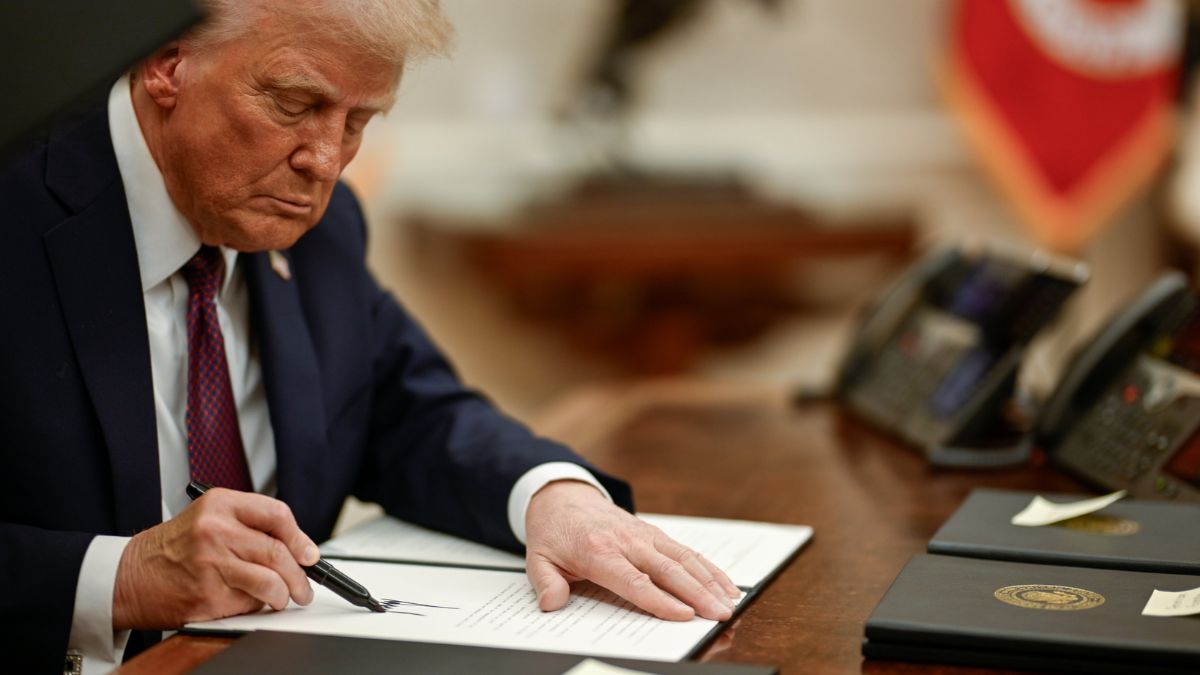
This Friday, U.S. President Donald Trump confirmed tariffs on Mexico, Canada, and China starting Saturday, February 1, a measure he had announced a few weeks ago and which he assured no one will stop.
During a speech at the Oval Office of the White House, Trump dismissed the idea that the tariffs on products from these three countries were a bargaining tool.
“No, it’s not. We have large trade deficits with all three countries. It’s something we’re doing, and we may increase it substantially, or not, we’ll see how it works out. But it’s a lot of money coming into the United States,” he said.
What other tariffs will Donald Trump impose?
Today, Trump announced his intention to apply tariffs on a wide range of imports in the coming months, including products such as gas, oil, steel, aluminum, pharmaceuticals, and semiconductors, thereby increasing pressure on his trading partners.
Why does Donald Trump want to impose tariffs on Mexico?
Even before taking office, President Donald Trump had insisted on imposing more tariffs on products entering the U.S. from Mexico, Canada, and China.
For Mexico and Canada, the imposition of a 25% tariff is in retaliation for the lack of measures to stop illegal migration to the United States. For China, the tariffs will be 10% due to the illegal fentanyl that is supplied for distribution in U.S. territory.
ALSO READ “We are prepared”, responds the president of Mexico to Donald Trump’s imposition of tariffs
What are tariffs?
Customs tariffs are taxes imposed on the importation of goods. Their purpose is to provide a competitive price advantage for domestic products over imported ones, in addition to serving as a source of income for governments.
How do tariffs affect Mexico?
Mexico’s Secretary of Economy, Marcelo Ebrard, stated this morning that the U.S. tariffs on Mexico will directly affect final products such as cars, computers, televisions, and refrigerators, which will tend to increase in price.
However, a study by the Mexican Institute for Competitiveness (IMCO) warned that the 25% tariffs would have repercussions on more productive sectors in the region, which would affect North America’s competitiveness in sectors like oil, transportation equipment, and food products.
According to IMCO experts, the immediate effect for Mexico would fall on the exporting industry, as 83% of its exports are destined for the U.S. In 2023, the total value of exports reached 490.18 billion dollars, which is nearly 30% of the country’s Gross Domestic Product (GDP).
The main impacts of the tariffs, as outlined by the institute, are as follows:
- Job reduction: Countries with strong exposure to tariffs tend to suffer job losses. Between 2018 and 2019 alone, U.S. companies affected by tariffs experienced a 1.4% decrease in manufacturing jobs.
- Energy sector: Canada and Mexico account for 69% of U.S. oil and gas imports, so an increase in the cost of these resources could raise production and transportation costs.
- Competitive disadvantage: With higher production costs, North America could lose its appeal compared to other economic regions.
- Increase in food prices: Mexico and Canada export 79% of the vegetables and 68% of the bakery products sold in the U.S. As prices rise, it is expected that the economic impact on U.S. households will result in an average annual spending increase ranging from $2,500 to $4,300, which could mean up to a 5.6% increase in families’ usual expenses.









